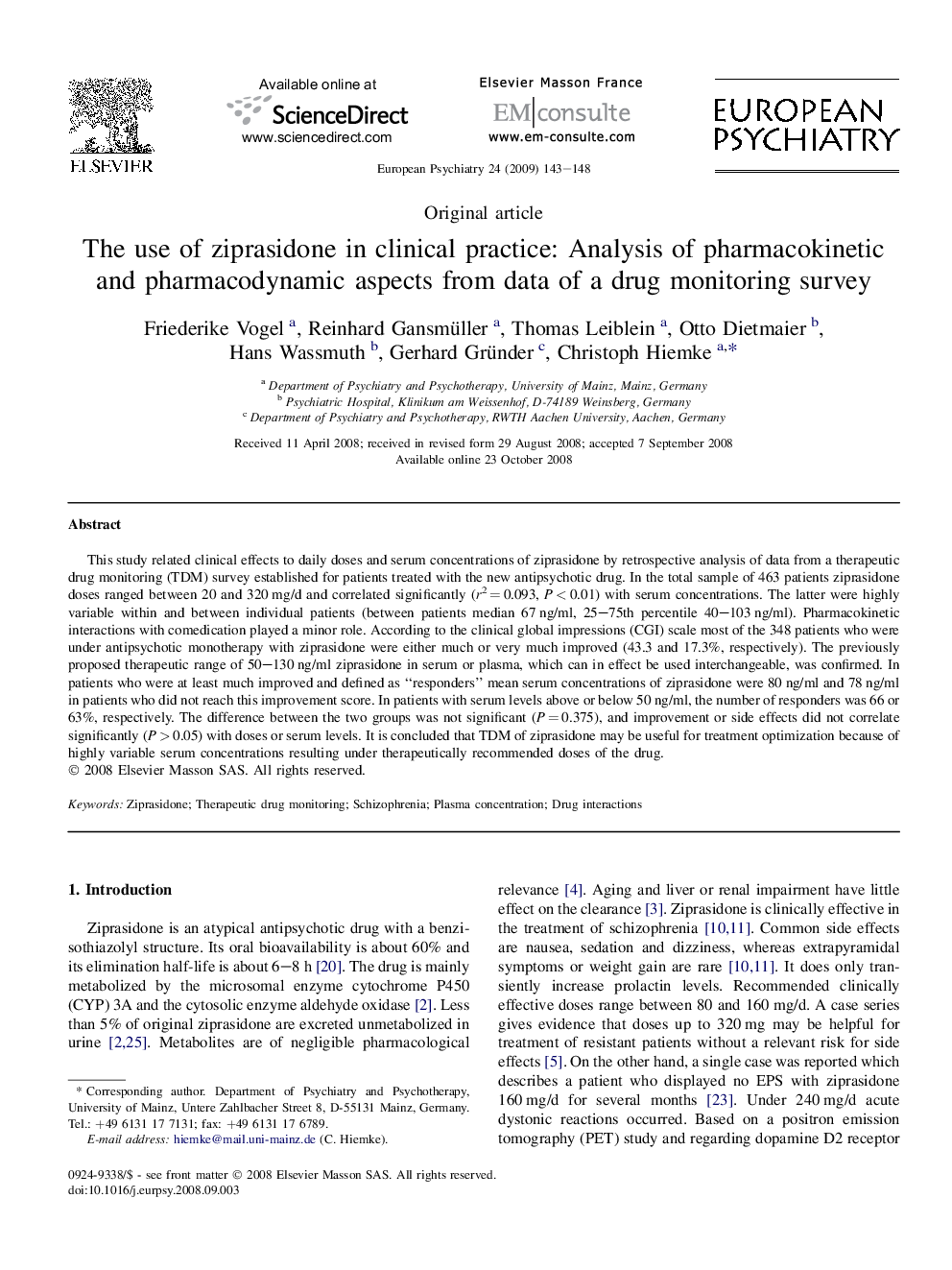| Article ID | Journal | Published Year | Pages | File Type |
|---|---|---|---|---|
| 4185205 | European Psychiatry | 2009 | 6 Pages |
This study related clinical effects to daily doses and serum concentrations of ziprasidone by retrospective analysis of data from a therapeutic drug monitoring (TDM) survey established for patients treated with the new antipsychotic drug. In the total sample of 463 patients ziprasidone doses ranged between 20 and 320 mg/d and correlated significantly (r2 = 0.093, P < 0.01) with serum concentrations. The latter were highly variable within and between individual patients (between patients median 67 ng/ml, 25–75th percentile 40–103 ng/ml). Pharmacokinetic interactions with comedication played a minor role. According to the clinical global impressions (CGI) scale most of the 348 patients who were under antipsychotic monotherapy with ziprasidone were either much or very much improved (43.3 and 17.3%, respectively). The previously proposed therapeutic range of 50–130 ng/ml ziprasidone in serum or plasma, which can in effect be used interchangeable, was confirmed. In patients who were at least much improved and defined as “responders” mean serum concentrations of ziprasidone were 80 ng/ml and 78 ng/ml in patients who did not reach this improvement score. In patients with serum levels above or below 50 ng/ml, the number of responders was 66 or 63%, respectively. The difference between the two groups was not significant (P = 0.375), and improvement or side effects did not correlate significantly (P > 0.05) with doses or serum levels. It is concluded that TDM of ziprasidone may be useful for treatment optimization because of highly variable serum concentrations resulting under therapeutically recommended doses of the drug.
